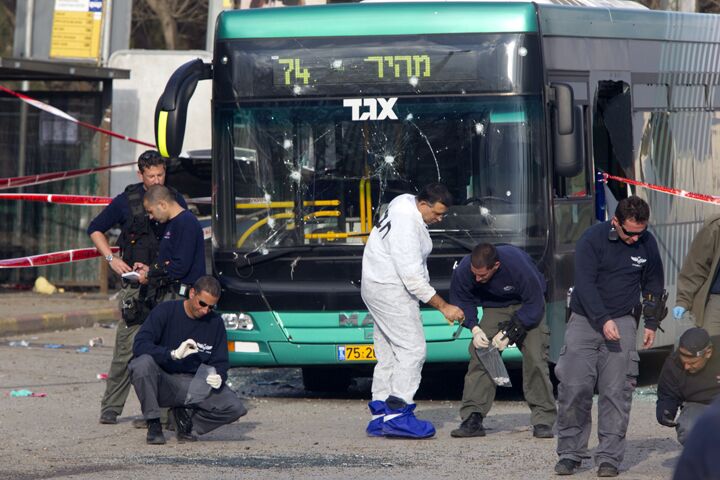
One Dead and 50 Wounded in Jerusalem Bombing
A bomb exploded near a bus stop in downtown Jerusalem Wednesday afternoon killing one and injuring 50.
The bomb placed inside of a bag was tied to a pole just outside the International Convention Center and across the street from the central bus station, one of the busiest transit points in the city, reportsHaaretz. When it exploded, the windows of two buses parked nearby were blown out.
This attack marks the first time that buses have been targeted by terrorists in Jerusalem since 2004. During the second intifada buses and bus stops were repeatedly hit resulting in massive casualties, inflicting fear on any who traveled through the city.
The bombing culminates a weeklong escalation of tension between Israelis and Palestinians, with some saying that Israel is on the verge of another war with Iranian proxy Hamas.
While visiting the scene of the explosion, Interior Minister Eli Yishai said, “I see the escalation is already here in a number of fronts—in the south and also in Jerusalem,” reported the Jerusalem Post. He continued, “Recent events require us to take action. If we don’t do this we will lose our power of deterrence.”
Here is a look back at the escalation of violence over the past week and a half he was referring to:
Next came this bombing in the heart of Jerusalem.
“No country would be prepared to absorb protracted missile fire on its cities and civilians, and of course the State of Israel is not prepared to,” said Prime Minister Benjamin Netanyahu in parliament, speaking of this escalation. “It could be that this matter will entail exchanges of blows, and it may take a certain period of time, but we are very determined to strike at the terrorist elements and deny them the means of attacking our citizens.”
This “exchange of blows” rhetoric is the hard stance that the Trumpet has long expected, but seldom seen, from Prime Minister Benjamin Netanyahu.
